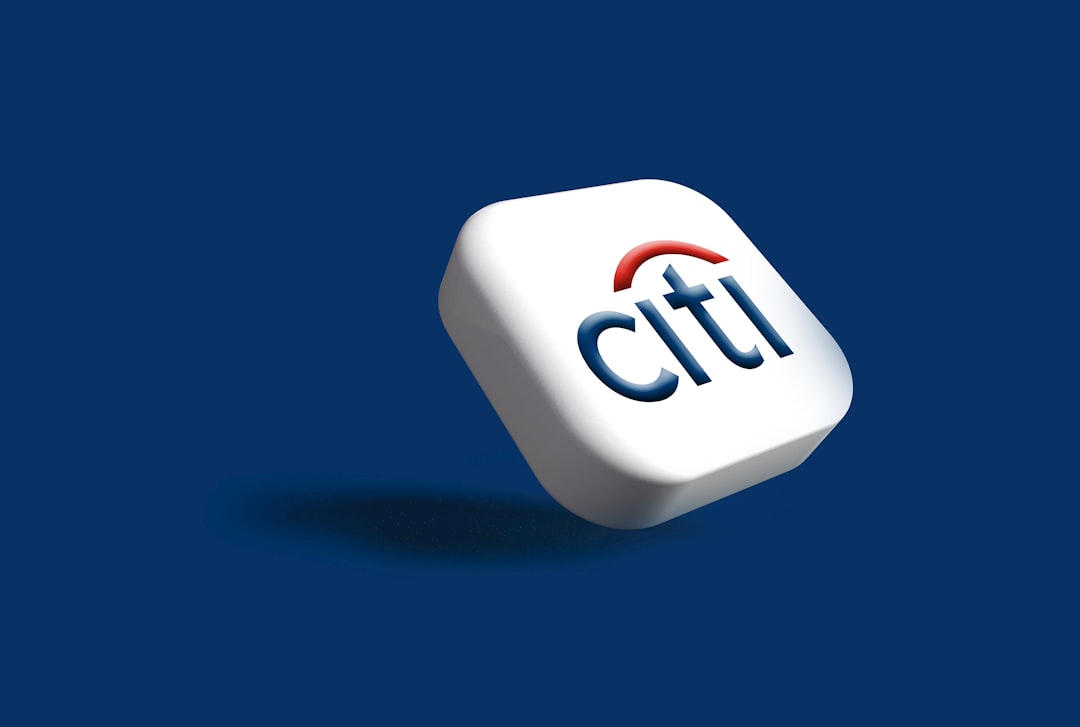

Engage prospects with a scan and streamline customer engagement with FREE QR code marketing tools by Sona – no strings attached!
Create a Free QR CodeFree consultation

No commitment

Engage prospects with a scan and streamline customer engagement with FREE QR code marketing tools by Sona – no strings attached!
Create a Free QR CodeFree consultation

No commitment
For commercial insurance providers, bridging the divide between outdated paper-based processes and the seamless digital experiences clients now expect presents a persistent challenge. Frequently, high-value prospects go unnoticed because actions taken on printed materials or during in-person interactions are not tracked, leading to lost opportunities where decision-makers remain anonymous and outside the CRM pipeline. The gap is especially costly at trade shows, in direct mail, and during on-site risk assessments where buying signals are strong but fleeting.
Traditional marketing tools like brochures, appointment cards, and policy documents also make it difficult to gauge true engagement, leaving teams without the insight needed to identify which businesses show real intent or are ready to buy. This lack of visibility impedes timely follow-up and can allow faster competitors to win deals that should have been yours. It also undermines attribution, as outlined in Sona’s blog post The Essential Guide to Offline Attribution, where leaders struggle to connect spend on print and events to pipeline and revenue, which makes planning and optimization guesswork.
Modern approaches such as the strategic use of QR codes in marketing now enable commercial insurance providers to transform every physical touchpoint into a measurable digital interaction. By embedding QR codes across insurance collateral, agencies can capture real-time intent signals, directly route prospects to customized landing pages or quote forms, and rapidly build richer, more actionable lead profiles. With these capabilities, commercial insurance providers are positioned to enhance lead generation, streamline policy management, and differentiate their client service from the first touch. This article explores how QR codes can be leveraged to create closed-loop marketing, unlock growth opportunities, and drive measurable results in the commercial insurance sector. Throughout, you will see how platforms like Sona QR and Sona.com, an AI-powered platform for identity resolution and attribution, help you manage codes at scale, integrate data with your CRM, and tie scan activity to revenue.

Too often, insurance agencies miss out on high-potential business leads simply because these prospects interact with print materials or attend events without leaving an obvious trace. Untracked, these valuable engagements never make it into the sales funnel, leading to untapped revenue and inefficient ad spend. QR codes remove this blind spot by turning brochures, signage, and handouts into instant onramps to digital actions you can measure and scale.
QR codes bridge this offline-to-online gap by enabling instant recognition and conversion, often before a competitor has a chance to respond. By replacing manual processes with automated capture, you can shorten time to lead, route queries to the right producers, and gather intent signals that inform next-best actions. Commercial insurance providers can now:
With these automation tools and processes, commercial insurance providers move beyond passive lead capture, ensuring that every serious prospect is surfaced and engaged at the moment of interest. When paired with a platform like Sona QR for code management and Sona.com for attribution, the entire journey from scan to revenue becomes visible and repeatable.

The reality for many insurance agencies is a persistent lack of visibility into who their materials are reaching and which prospects are moving closer to conversion. This results in wasted spend on cold traffic and missed opportunities to personalize sales engagement for those who show clear buying signals. In an industry where timely outreach can make the difference between a lost deal and a loyal client, QR codes address this gap with speed, simplicity, and measurable impact.
QR codes excel because they convert curiosity into action without extra steps. No app download is required, and the destination can be anything from a quote form to a calendar booking link. On appointment cards, flyers, billboards, or event lanyards, a quick scan transforms an anonymous interaction into a trackable lead with context and intent:
In practice, agencies have used QR codes on appointment cards to streamline calendar booking, on event lanyards to prioritize hot leads by session interest, and on direct mail pieces to turn cold outreach into measurable pipeline. For industry context, see six innovative uses of QR codes in insurance. The result is a faster, clearer path from first impression to qualified conversation.
Commercial insurance teams often struggle to gauge which channels convert when print dominates the budget. Selecting the right QR format for each scenario transforms every asset into a feedback-rich channel. Dynamic codes are generally recommended since they allow you to change destinations without reprinting and capture detailed analytics.
Dynamic QR codes give your marketing the agility to iterate. Use static codes only for evergreen destinations like corporate contact pages or compliance PDFs. For any lead-generation or service flow where you want data and flexibility, choose dynamic.

Recurring print and in-person assets are abundant in commercial insurance, yet they are often where momentum is lost. The aim is to position QR codes where intent is high, context is clear, and next steps are obvious. Consider embedding codes at the following moments to capture and accelerate demand:
By focusing on specific offline moments where intent peaks and churn risk rises, providers can reclaim missed opportunities while proving the value of print and events with hard data.

Lead capture and service efficiency improve dramatically when QR codes tie physical interactions to digital workflows. The following use cases map directly to common client journeys and measurable outcomes:
Each use case supports a specific action like booking, form completion, or review capture. With Sona QR, you can attribute outcomes, segment responders, and iterate on creative to maximize lift.
Every QR scan is a signal. It carries context such as what was scanned, where it happened, and what the user did next. When you combine scan data from multiple touchpoints, you can build high-quality retargeting audiences and orchestrate precise next steps across email, SMS, ads, and sales. For execution tactics, see Sona’s Playbook titled Intent-Driven Retargeting.
Start by designing your QR footprint around the buyer journey. Awareness codes live on brochures and event signage, consideration codes live on product sheets and case studies, and conversion codes live on pricing sheets, renewal notices, and calendar links. Then, segment automatically based on behavior and context:
Retargeting based on scan intent ensures you are following up on real behavior rather than assumptions. It also gives your sales team the context to approach conversations with relevance and urgency.
QR codes act as connective tissue across offline and digital campaigns. They convert passive impressions into active engagement while generating the data required to prove impact. For commercial insurance providers, the key is to place codes where target buyers already interact with your brand and to integrate scan activity into your analytics and CRM for a closed-loop view.
Here are ways QR codes enhance a broader marketing strategy for commercial insurance:
QR codes serve as the offline onramp to your digital engine. With a centralized platform like Sona QR, you can manage codes, monitor performance, and sync scan data with Salesforce, HubSpot, and ad platforms. Over time, this connected fabric reveals a true path to revenue across channels that were previously difficult to measure.
Define a clear outcome for the campaign and align the QR code with a specific business result. For commercial insurance providers, common goals include instant quote capture, renewal acceleration, claims triage, and event lead generation. Tying the code to a single, valuable action simplifies your creative and improves adoption.
For example, capture instant quote requests from business owners at a local expo instead of relying on manually collected lists that often go stale. Create one code per line of business and one per session or giveaway to segment interest from the start. Make the landing experience short and mobile-friendly, and offer calendar booking upon completion.
Choose dynamic QR codes for most lead-generation and service scenarios. Dynamic codes enable destination edits without reprinting, support A/B testing, and capture analytics such as time, device, and location. Static codes are better for evergreen content like compliance documents or general contact pages where tracking is less critical.
In addition to dynamic versus static, select the right action type. Use web links for landing pages and forms, SMS or email for pre-filled requests, vCards for producer contact saves, and calendar links for immediate booking. Align the code type with user context and the device likely to be used.
Design for clarity and trust. Use your logo, brand colors, and a short, benefit-driven call to action that explains the value of scanning. Place the code at an appropriate size for the environment and provide enough white space for easy detection. The CTA should answer the question, why should I scan right now.
Testing protects your campaign investment. Scan across multiple devices and lighting conditions, validate destination load speed, and ensure that tracking parameters such as UTM codes are firing correctly. If you are using dynamic codes, set up split tests for different CTAs or headings to learn what yields the highest scan-to-action rate.
Roll out codes where time-to-lead matters most. Prioritize trade show signage, session handouts, and direct mail for prospecting, and policy documents, invoices, and renewal packets for retention and expansion. Match placement to real-world behavior. For example, a booth backdrop code should drive to a simple, mobile-friendly intake; a renewal insert code should drive to a comparison and booking flow.
Coordinate with producers and marketing so every code has an owner and a follow-up plan. Provide scripts and enablement materials that explain the benefit to clients. If you are co-marketing with partners, generate unique codes per location or branch to understand which relationships drive pipeline.
Deploy a dashboard to attribute scans by asset, segment by intent, and track downstream outcomes. With Sona QR, and Sona.com, you can monitor scan trends in real time, connect anonymous scans to known buyers through identity resolution, and tie QR activity to pipeline using multi-touch attribution. This closes the loop from impression to revenue. For deeper strategies on identification, read Sona’s blog post The Essential Guide to Account Identification.
Optimization is continuous. Run A/B tests on CTAs and landing pages; refine your targeting by industry, company size, or line of business; and shift budget to the assets and placements that produce the highest scan-to-opportunity conversion. Share insights with producers so they can reinforce what works in conversations and outreach.
A major frustration for commercial insurance marketers is the inability to clearly connect early engagement, like a brochure scan, to eventual revenue. Without this, it is difficult to justify print and event spend or scale successful campaigns with confidence. Modern QR analytics solve the last-mile attribution problem by linking offline touchpoints to online outcomes.
With Sona QR and Sona.com, you get a unified view of how QR activity contributes to pipeline and closed-won deals. You can track exactly which code drove a meeting, which landing page converted best, and which events produced opportunities by vertical. This not only informs creative and placement decisions, it also strengthens the case for budget and headcount.
This data-driven approach gives commercial insurance providers control over their pipeline. Instead of guessing which prints and events work, you can see it, prove it, and scale it.
Sustainable results come from disciplined deployment, not one-off experiments. The following practices help you maximize scan rates, improve conversion, and make data useful across your organization:
When teams understand the why and the how, QR becomes part of the culture. Over time, your code library and audience segments become strategic assets that compound results.

Commercial insurance organizations have discovered new growth by addressing the offline-to-online disconnect with QR codes. The most effective implementations share three traits: clear value to the scanner, frictionless destinations, and rigorous tracking.
These examples illustrate a repeatable principle: pair a specific physical context with a high-value digital action, then measure everything. Results follow when the experience is fast, clear, and relevant.
Historically, the lag between a prospect’s initial engagement and a meaningful conversation with an agent has cost commercial insurance providers countless leads and opportunities. QR codes enable agencies to convert every printed asset, event touchpoint, and in-person interaction into a digital step you can measure and optimize. The payoff is substantial: more qualified leads, faster response times, and stronger attribution across a channel mix that used to be opaque.
As agencies work to blend trusted human relationships with scalable digital processes, QR-driven strategies stand out as a practical way to modernize policy management and accelerate revenue. With Sona QR, you can generate dynamic codes, manage campaigns centrally, and sync scan data with your CRM. With Sona.com, you can attribute scans to pipeline and revenue, unify journeys across channels, and make investment decisions with confidence. If you are ready to capture demand at the source, start by creating your first codes, placing them where intent is highest, and instrumenting the path from scan to signed policy. Start creating QR codes for free.
QR codes have transformed commercial insurance providers from traditional outreach methods into dynamic, measurable lead generation channels. Whether it’s capturing qualified leads, streamlining policy inquiries, or enhancing client engagement, QR codes replace cumbersome processes with instant, mobile-friendly actions that deliver real-time data to optimize every marketing touchpoint. Imagine knowing exactly which campaigns attract the most prospects and being able to refine your strategy instantly to maximize conversions.
With Sona QR, commercial insurance providers can create dynamic, trackable QR codes in seconds, update campaigns on the fly without reprinting materials, and directly link every scan to tangible business outcomes. No more guesswork—just smarter, more efficient lead capture and customer acquisition that drives growth. Start for free with Sona QR today and turn every scan into a valuable conversation, a qualified lead, or a closed policy.
The article does not list specific top commercial insurance providers but focuses on strategies for providers to improve lead capture and customer engagement.
Choosing the best provider involves evaluating their ability to offer seamless digital experiences, effective lead tracking, personalized service, and strong integration with CRM systems.
Commercial insurance providers typically offer coverage lines such as commercial auto, property, cyber, and workers’ compensation.
QR codes improve experience by turning print materials into trackable digital touchpoints that capture real-time intent, enable instant quote requests, streamline claims initiation, allow calendar booking, and provide personalized, measurable engagement.
Using a commercial insurance provider offers benefits like enhanced lead generation, streamlined policy management, faster response times, accurate attribution of marketing efforts, and improved client service through digital tools such as QR codes.
QR codes bridge offline and online interactions, provide measurable engagement data, enable timely follow-up, reduce manual data entry, and improve marketing ROI by converting passive impressions into actionable leads.
Common QR code formats include dynamic web links to landing pages or quote forms, vCards for contact sharing, pre-filled web forms, SMS or email triggers, app download links, and calendar booking codes.
Effective placements include policy welcome packets, trade show booths, business cards, direct mail, risk assessment visits, invoices, safety posters, and partner retail environments.
Providers use platforms like Sona QR and Sona.com to track scans by time, location, and device, integrate data with CRM systems, measure conversion rates, attribute revenue, and optimize campaigns based on real-time analytics.
Best practices include defining clear campaign objectives, choosing dynamic QR codes, designing codes with branding and CTAs, deploying codes across high-impact channels, educating staff, automating follow-up, and continuously tracking and optimizing performance.
QR code scans carry context that allows segmentation by use case, line of business, location, and buyer journey stage, enabling precise retargeting through CRM and ad platforms based on real user behavior.
Yes, QR codes enable instant digital engagement such as quote requests and calendar booking, which shortens the sales cycle and accelerates conversion by capturing interest at the moment it occurs.
Examples include property insurance flyers driving higher quote conversions, trade show segmentation with dynamic codes, COI access via job site badges, renewal acceleration through invoice QR codes, and review capture to boost referrals.
Providers embed QR codes in brochures, direct mail, trade shows, digital signage, partner locations, and webinars to connect physical assets with digital experiences and unify data for closed-loop attribution.
Use Sona QR's trackable codes to improve customer acquisition and engagement today.
Create Your FREE Trackable QR Code in SecondsJoin results-focused teams combining Sona Platform automation with advanced Google Ads strategies to scale lead generation

Connect your existing CRM

Free Account Enrichment

No setup fees
No commitment required

Free consultation

Get a custom Google Ads roadmap for your business






Launch campaigns that generate qualified leads in 30 days or less.
